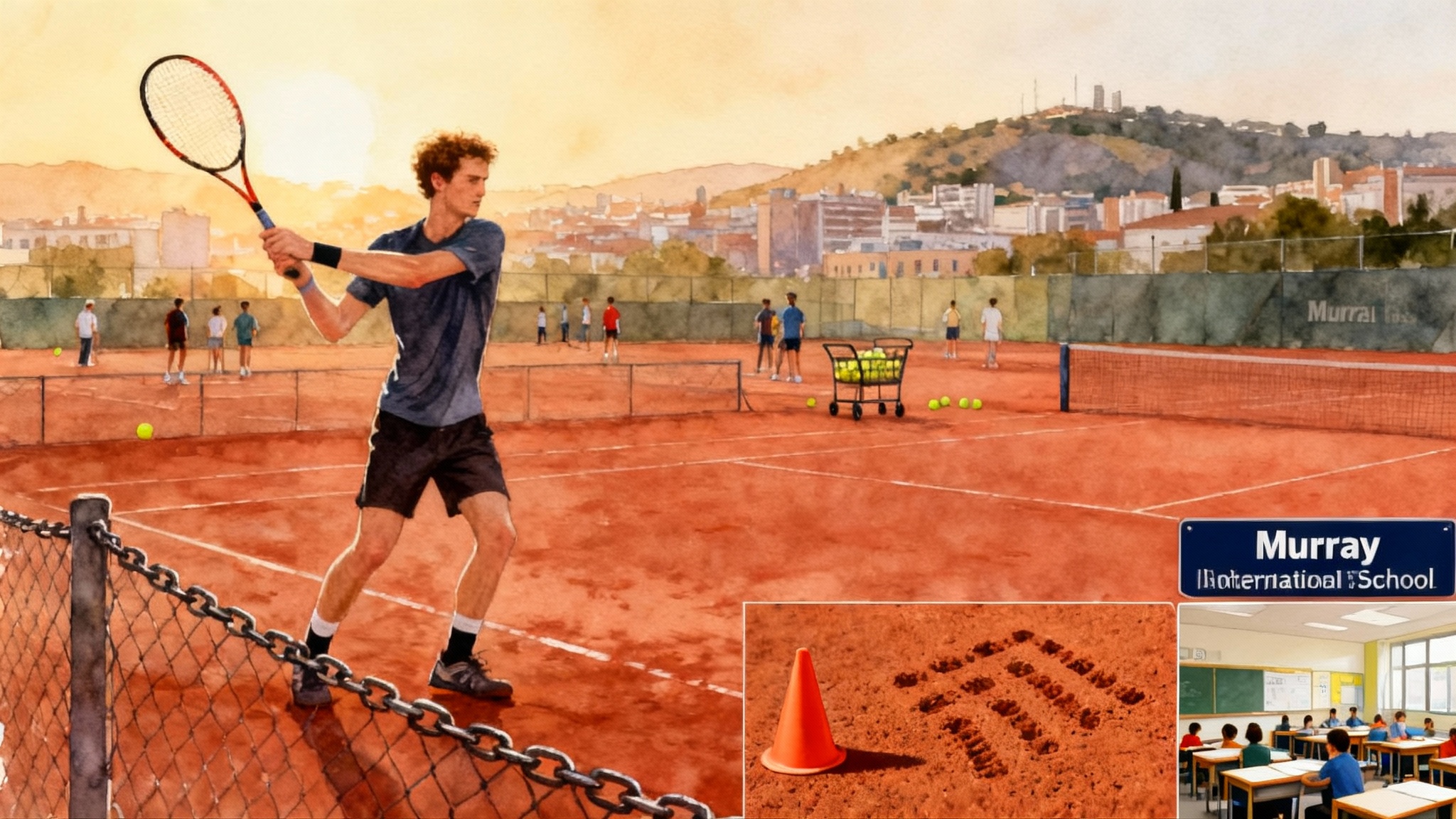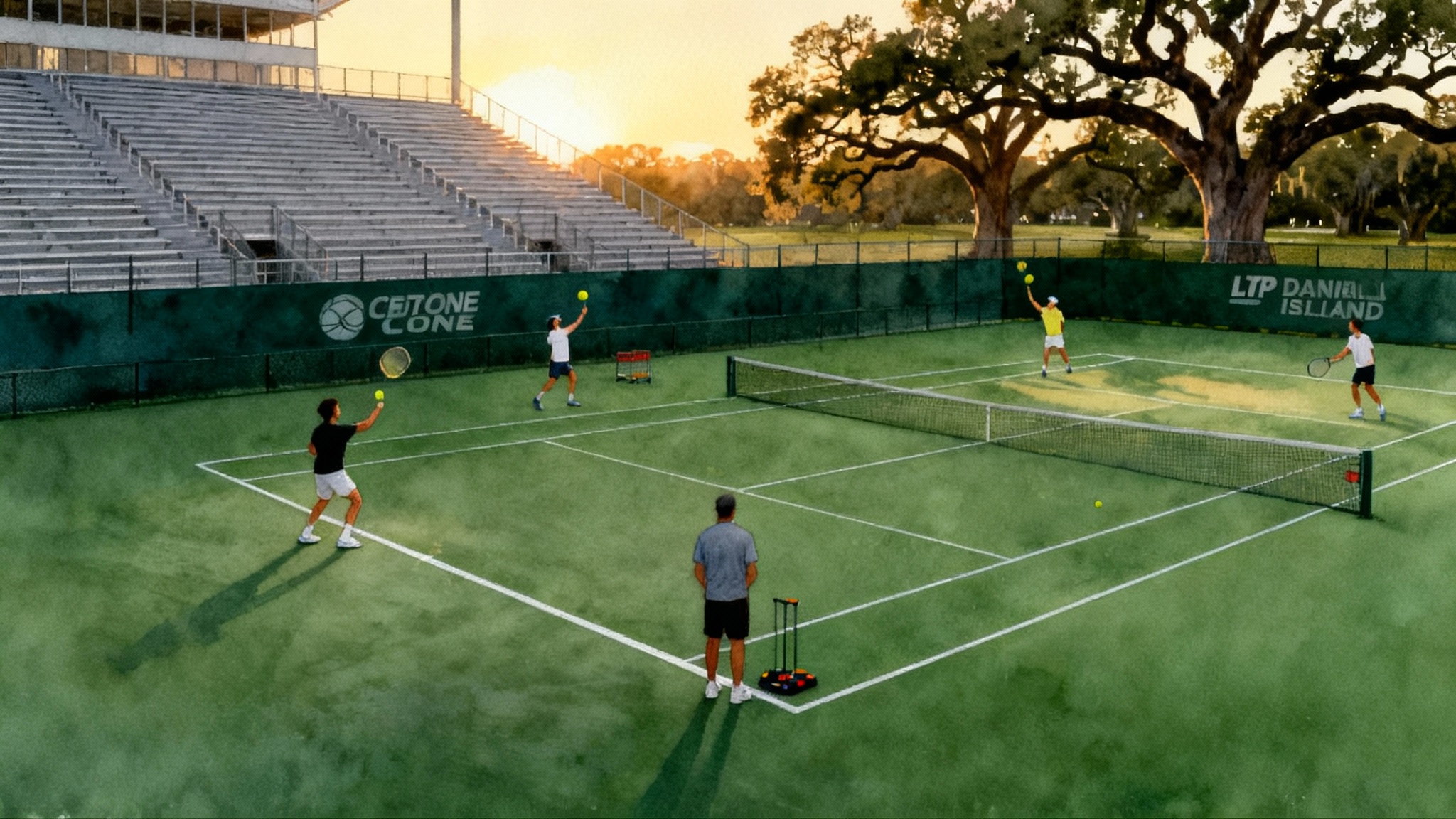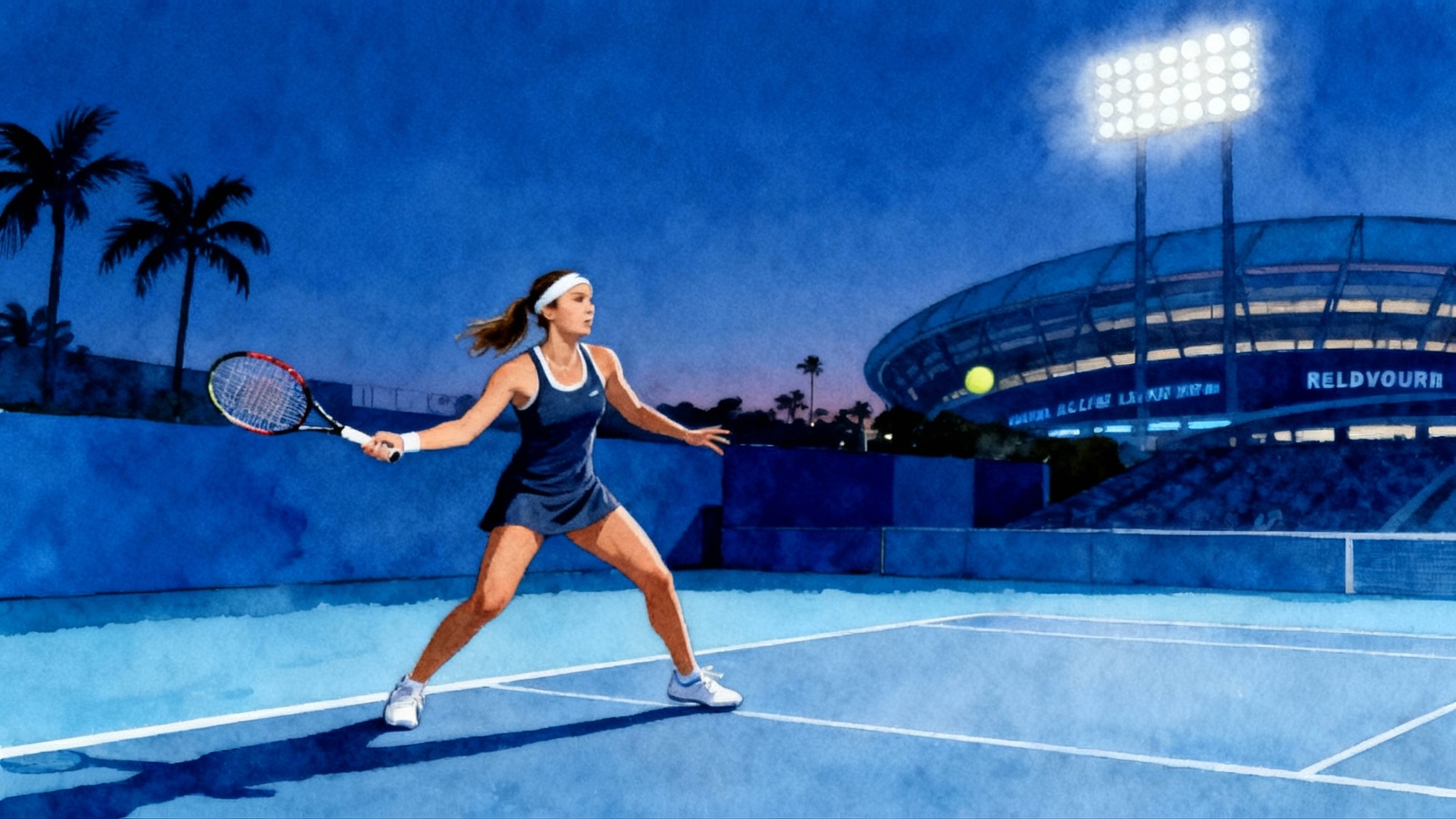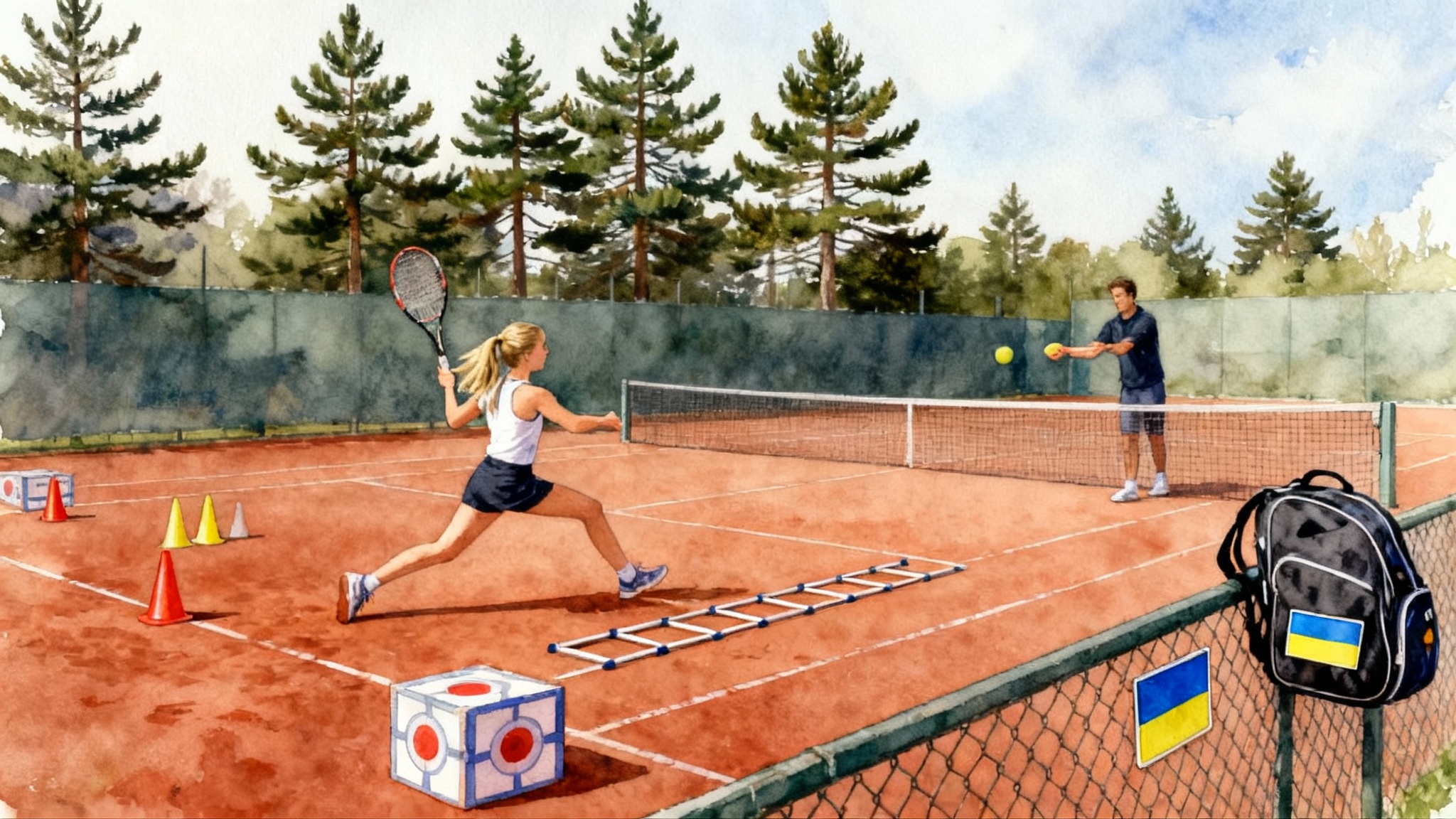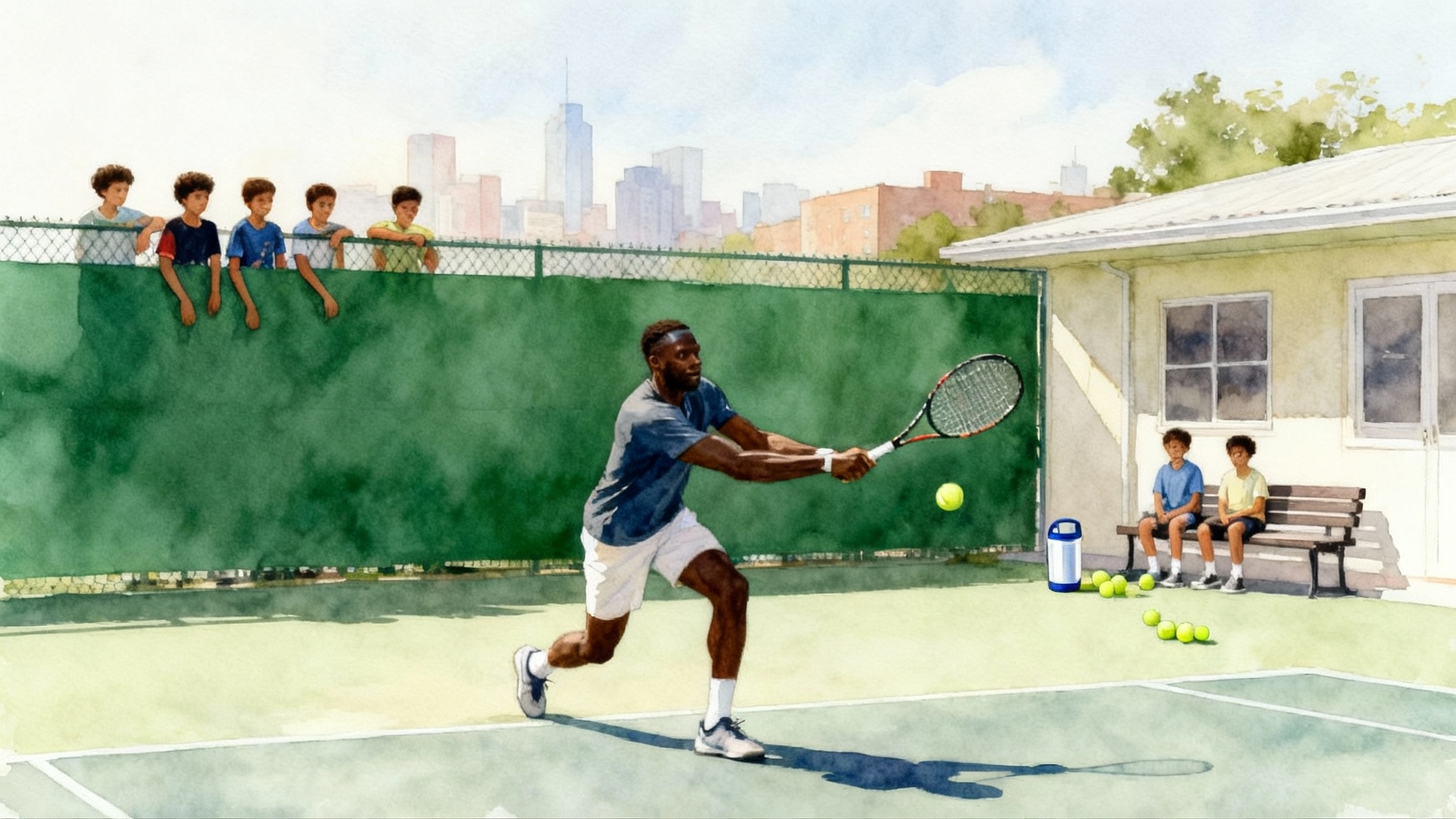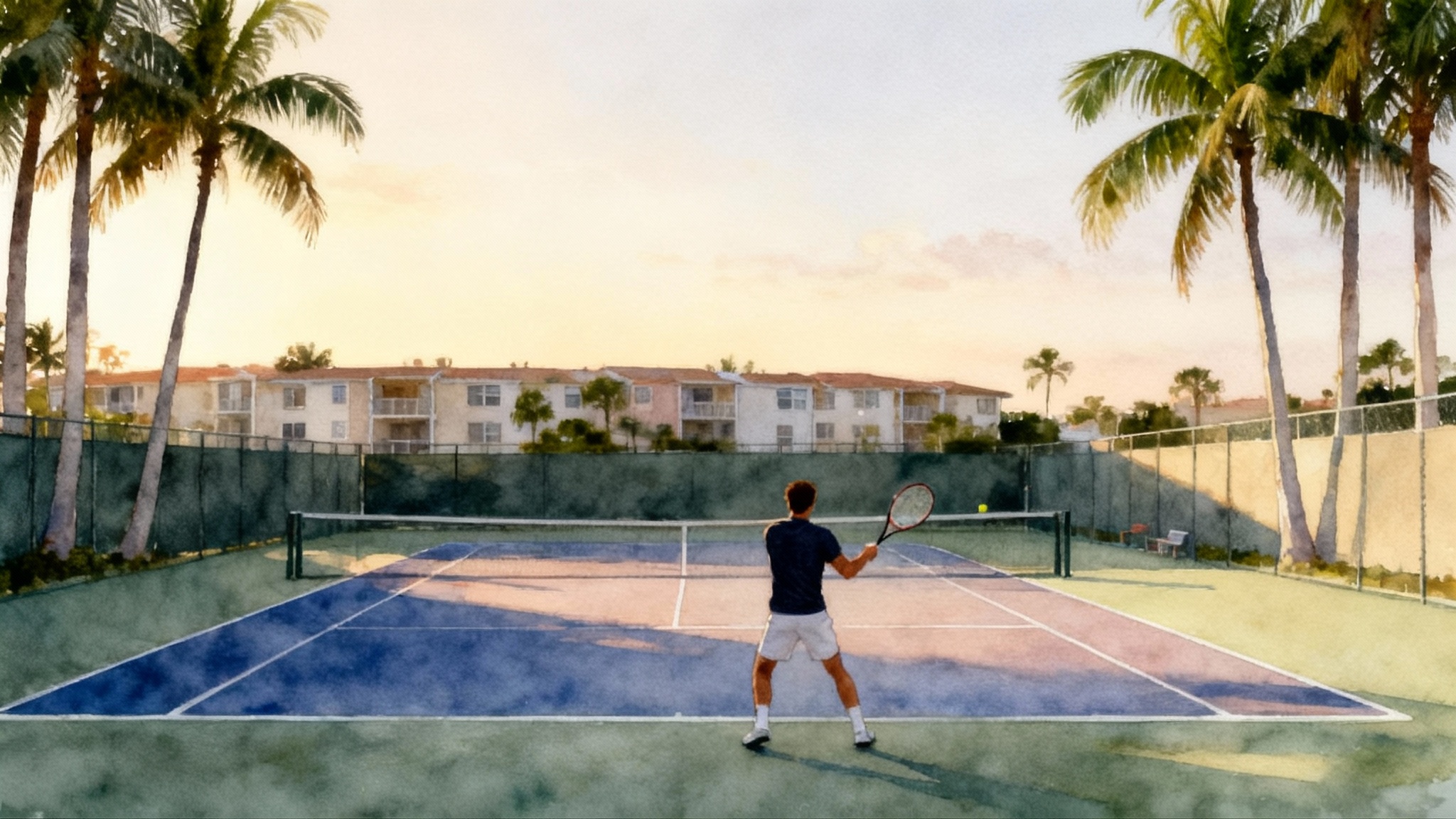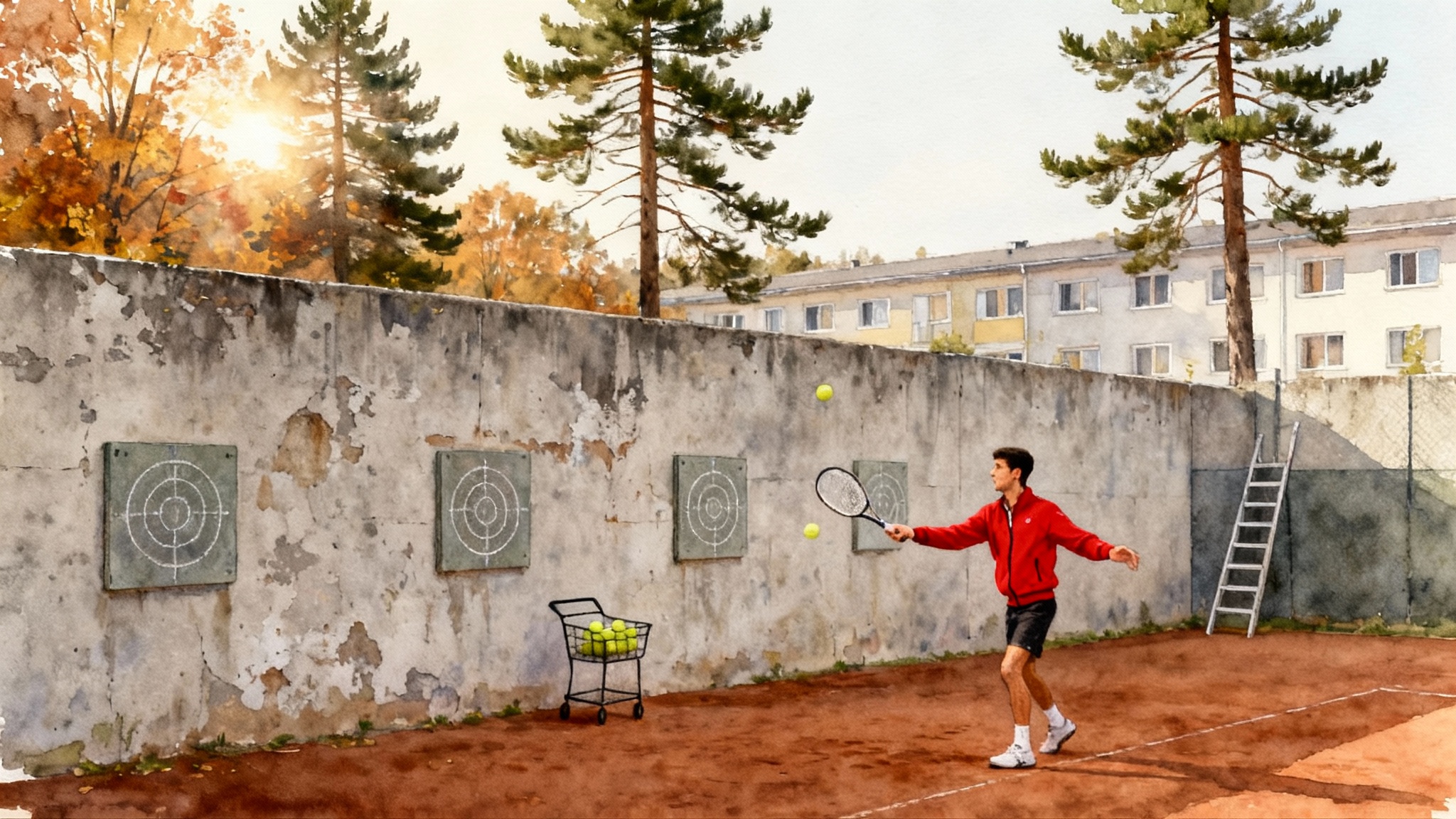How Piatti Academy Forged Jannik Sinner’s Rise
At 13, Jannik Sinner left South Tyrol for Bordighera and the Piatti Academy. Here is a data-driven look at late specialization, fundamentals and reps, Challenger-first scheduling, and his 2022 coaching reset with parent-ready checklists.
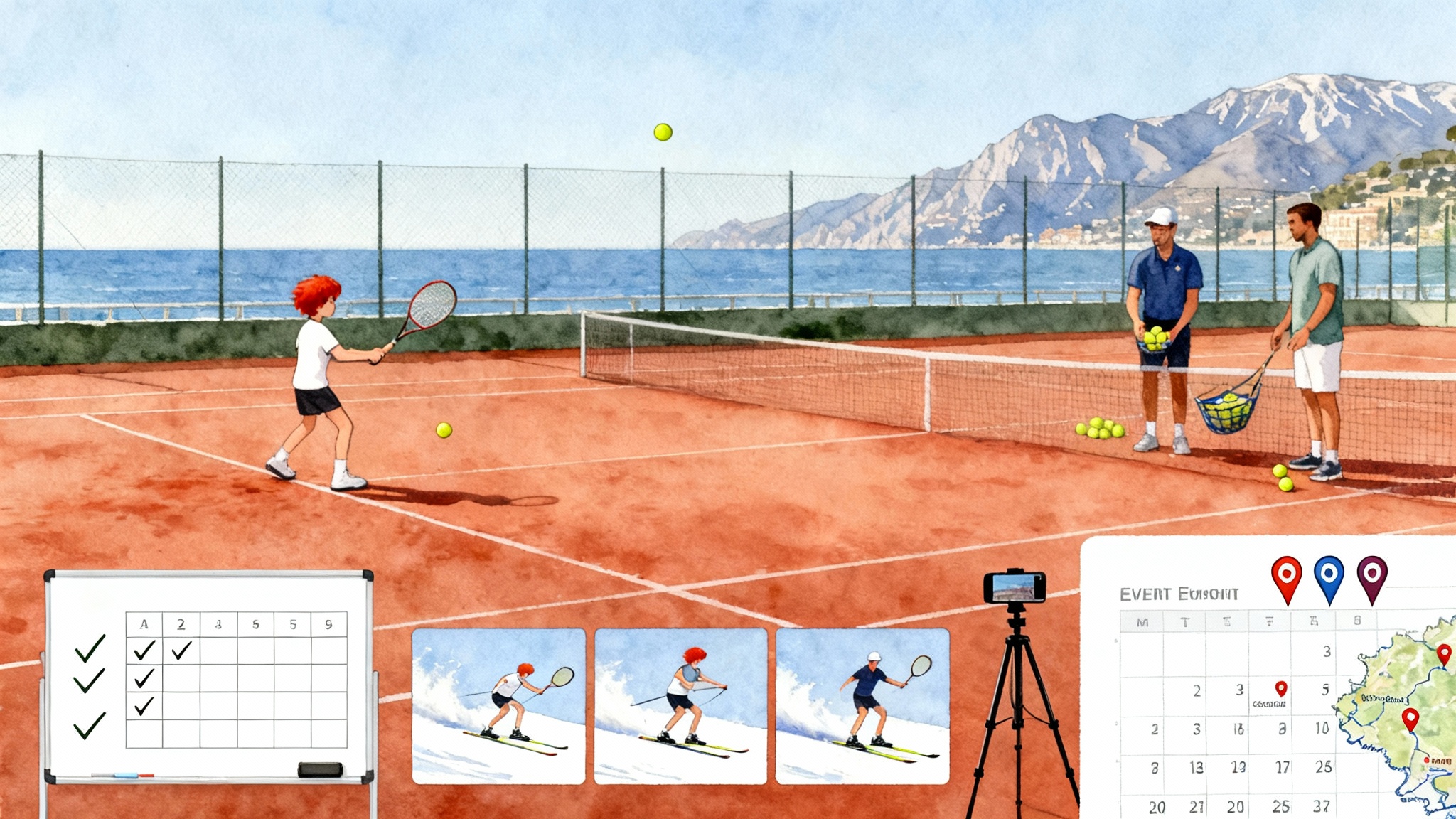
From ski gates to baseline lines
Thirteen is a fragile age to change a life. Jannik Sinner left Sesto in South Tyrol for Bordighera on the Ligurian coast to train at Riccardo Piatti's academy. He was a gifted alpine skier and a hungry tennis learner. Within a few seasons he collected signature career markers that validated the move: the Next Gen ATP Finals title in 2019, a first tour title in 2020, and his first major at the Australian Open in 2024. A concise history sits in his ATP Tour player profile, but the mechanism matters more than the milestones. How did a 13-year relocation, a late specialization background, a training model built on fundamentals and repetitions, and a Challenger-first competition plan work together to forge a world-class player?
For context across different development models, compare the Equelite path that forged Alcaraz and the Pilic pathway that shaped Djokovic.
This article translates Sinner's path into practical checklists. It will help parents decide when to relocate, how to vet an academy-coach fit, and how to use competition blocks to accelerate development.
The 13-year decision: mountains to the Mediterranean
Relocating at 13 forced clarity. Moving from a mountain village to a professional training hub replaced comfort with intentional structure. The trade was concrete: daily hours on court and in the gym, a peer group of older and better players, coaches who tracked progress, and a calendar that blended training blocks with targeted events. The price was also concrete: distance from home, language and school adjustments, and a full commitment to a long-term plan. Families exploring the Riviera scene can also study the All In Academy on the Riviera to understand how a modern campus organizes school, training, and travel.
Why the age matters: before 13, coordination and general athletic capacity still compound very fast. After 13, gains increasingly favor specific skill chains in the chosen sport. Sinner arrived in Bordighera right as tennis-specific learning curves steepened; the timing let him keep the broad engine from skiing while attaching it to tennis technique.
Parents considering a similar move should ask three data questions first:
- Is the athlete's current weekly training density high enough to justify relocation, or can you recreate it locally for one more year at lower cost and risk?
- Does the athlete have consistent access to practice partners who push them to a useful edge at least three times a week?
- Can the academy provide objective progress logs every two weeks that would not be possible at home?
If two of those answers are no and the academy can answer yes to all three, relocation becomes a rational experiment.
Late specialization: the skiing advantage you can measure
Sinner's skiing past was not trivia. It created a general athletic platform with three specific benefits that transfer well to tennis.
- Balance under speed. Skiing teaches the body to stay organized while edges bite and release. In tennis that maps to stable open-stance hitting and clean recovery out of the corners.
- Anticipation from pattern recognition. A skier reads a course early; a tennis player reads ball flight, opponent's shoulder line, and contact point. The habit of reading ahead is the same.
- Eccentric and rotational strength. Ski turns and recoveries build lower-body braking strength and torso control, which protect joints during wide defensive slides and help the body stop before it strikes.
You do not need snow to borrow these benefits. Build a late specialization toolkit with measurable drills:
- Single-leg hop to stick: three sets of six per side, land and hold for two seconds. Track stability losses per set. Target is one or fewer losses each set.
- Reaction color call with medicine ball: partner calls a color at the toss, athlete rotates and slams to that target. Ten reps each side. Track decision time. Target is consistent sub one second response.
- Deceleration runs on court lines: sprint three courts, stop at the service line each time with two controlled steps. Target is symmetric stopping mechanics on both legs.
These are the kinds of athletic qualities Sinner seemed to carry from slopes to hard courts. The principle is simple: build a broad base first, layer tennis detail second.
The Piatti model: fundamentals and reps that compound
Riccardo Piatti's reputation rests on detail and volume. His players talk about clean technique, patterning, and a culture of measurable repetitions. Before Sinner, Piatti worked with top professionals across different eras, which helped the academy distill repeatable principles from varied success stories. You can scan that coaching arc on the Riccardo Piatti coaching career.
What do fundamentals and reps actually look like day to day? Strip the jargon and you get three layers.
1) Stroke hygiene
- Contact point windows: define acceptable zones for forehand and backhand contact. Use cones; score each ball in or out of the window.
- Depth and height bands: assign targets that sit three feet inside the baseline with net clearance between 80 and 120 centimeters. Track percentage. Good practice weeks live above 60 percent.
- Serve foundations: two serves, one intention each. Flat to spots, kick for shape. Track first serve percentage and unreturned rate separately, not just makes.
2) Patterning and decision training
- Two-ball command drills: for example, backhand cross, forehand down the line on coach's call. The brain learns to change shapes quickly; the body learns to sequence legs and torso the same way each time.
- Pressure ladders: first to 11 points, then to 7 with serve starting under 30 seconds, then to 5 with a neutral ball feed. Pressure increases while duration decreases. Track conversion rate. Accept a small drop under pressure but aim to stabilize it by week's end.
3) Volume with purpose
- Time-boxed blocks: three sets of 15 minutes per focus, not endless hitting. Players stay present, coaches log counts, and both move on. Volume without clarity is noise; volume with logs is evidence.
Parents can audit an academy by asking to see last month's training logs, not a highlight reel. Look for counts, percentages, and notes that show cause and effect, such as: added wider base on backhand; depth rate rose from 52 to 61 percent in four sessions.
Challenger-first scheduling: accelerate the learning loop
Sinner's calendar at 17 and 18 tilted toward professional events over junior showcases. He took wild cards where available, then earned his way through qualifying, and used a handful of results to shortcut ranking inertia. The lesson was not that juniors are useless; it was that the fastest learning lives where points are expensive and patterns are punishing. The Challenger Tour offered exactly that.
Why it worked as a system:
- Feedback density. Every week delivered opponents with weapons and depth. Patterns that beat juniors did not survive against seasoned players, which forced better choices faster.
- Ranking math. A second week run at a Challenger moved the needle more than a junior trophy. One step forward changed entry lists for the next month.
- Surface continuity. Consecutive events on the same surface compressed adaptation time.
Parents and players can steal this logic without copying the exact route. Use a block-based approach and measure the return on each block.
Block structure template, 8 to 12 weeks:
- Weeks 1 to 3: Build. High-volume fundamentals, patterning, matchplay sets, and two point-based test days that simulate qualifying patterns.
- Weeks 4 to 7: Compete. One to two Futures or Challengers per two-week stretch, ideally in the same region. Travel only if a new event offers either stronger fields for experience or a qualifying entry that your ranking now permits.
- Weeks 8 to 9: Debrief and adjust. Two days off, three days technical with reduced volume, matchplay against styles that caused problems, then a short conditioning bump.
Block scorecard to decide what comes next:
- Points gained divided by events played. A ratio above two suggests you earned entry momentum; chase it.
- Matches within two points. Count how many defeats hung on two points per set. If that number rises while you also gain points, stay at the level one more block; you are close to a jump.
- Serve hold and break opportunities. Even without advanced analytics, track holds per match and total break points created. If holds climb and break chances stay flat, emphasize return and first two shots in the next build phase.
The heart of Sinner's early ascent was not a single win; it was the compounding of these small block-level edges.
2022 coaching reset: pruning to grow
After several years with Piatti, Sinner changed course in 2022, parting with his longtime coach and reorganizing his team. The why matters more than the headlines. Young players hit a point where strengths need to be preserved while weaknesses receive systematic attention. A reset lets a player protect their competitive identity and still update the system.
A practical way to understand the switch is to list aims that such changes typically target:
- Serve quality. Not just speed, but location patterns and quality of the third ball. A small gain in first serve location can lift hold percentage over a whole season.
- Net threat. Turn short balls into a commitment to finish. Even a modest increase in approach attempts forces opponents to change depth.
- Physical robustness. Schedule and training tweaks to reduce niggles that steal practice time.
Parents can borrow this idea. Every season, hold a mini reset meeting. Keep what clearly works. Pick one technical priority and one tactical priority. Choose two metrics. Give the plan 12 weeks, then remeasure.
Decision checklist 1: when to relocate
A relocation is not a vibe call; it is a readiness test. Score each item yes or no.
- Training density at home: you can deliver four high-quality on-court sessions and two physical sessions per week with strong partners. If yes, consider waiting one more season. If no, relocation gains weight.
- Peer group: your player trains weekly with opponents who win at least 60 percent of sets against them. If no, relocation can create the necessary stretch.
- Coaching clarity: candidate academy provides sample logs with counts and clear goals. If no, do not move yet.
- School plan: realistic schedule for education with daily study blocks. If no, fix this first.
- Family logistics: a parent or trusted guardian can spend the first two to four weeks on site to smooth the transition. If no, delay the move.
- Financial runway: budget covers travel, coaching, and living for at least nine months. If no, construct a hybrid plan that adds regional blocks before relocating.
Green light if at least five items are yes and none of the no answers relate to school or safeguarding. Yellow light if three to four items are yes; test with a four-week live-in trial. Red light if two or fewer items are yes.
Decision checklist 2: how to vet academy-coach fit
Ask for evidence, then watch a session. Use this list.
- Session structure: does the daily plan specify minutes per focus, targets, and a debrief slot?
- Logging: do they track depth percentage, first serve location, and rally length, not just winners and errors?
- Player to coach ratio: do they protect a ratio that keeps feedback frequent during key drills?
- Video and review: is there a scheduled video slot each week with clips from practice and matches?
- Progress ladder: is there a written pathway from fundamentals to patterns to pressure and competition? Does it show when and how they graduate a player to the next step?
- Injury prevention: can they describe a lower-body deceleration routine and shoulder care plan in plain language?
- Peer group: can they name three players who will push your athlete and schedule sets with them in week one?
- Communication: do you leave with two metrics they will send you every Friday?
If an academy cannot show their process in numbers and video within one visit, the fit is not right.
Decision checklist 3: competition blocks that accelerate development
Smart schedules teach faster and cost less. Here is a template you can copy and customize.
- Choose a theme per block: for example, second serve aggression or depth on the backhand wing.
- Pick a level that challenges but does not crush: top juniors, Futures, or Challengers. Use last block results to decide.
- Cluster events by surface and region to limit adaptation cost.
- Pre-qualifying test day before travel: two sets against a server and a grinder, record hold rate and total break chances.
- Clear rules for entry lists: select events where you either earn main draw or where two wins in qualifying look realistic.
- Match micro-goals that feed the theme: for a depth theme, track percentage of rallies that start with a neutral ball struck beyond the service line.
- Post-event debrief within 48 hours: two clips that show theme progress, one clip that shows the next constraint to fix.
Use the block scorecard from the scheduling section to decide whether to repeat the level, jump, or drop for seasoning.
A sample 12-week junior plan inspired by Sinner's path
Week 1 to 3: Build
- Technical: forehand height and depth banding, backhand contact window, serve locations to deuce and ad corners.
- Physical: single-leg stability, deceleration mechanics, core anti-rotation.
- Tactical: two-ball command drill with pattern calls; add approach on any short ball beyond the service line.
- Metrics: 60 percent depth to the three-foot target zone; first serve locations to the inner third of each box 55 percent or higher.
Week 4 to 7: Compete
- Enter two to three events that match your current level; pick surfaces that match the build block.
- Process goals: serve plus one to corners; return depth beyond the service line on second serves.
- Data capture: first serve percentage, unreturned serves, total break points created, and conversion under score pressure at 30 all and deuce.
Week 8 to 9: Debrief and adjust
- Two rest days; one review day with clips; two technique days that fix the top constraint that appeared during matches.
- Conditioning: extend point tolerance with on-court intervals that mimic 15 to 20 ball rallies.
Week 10 to 12: Compete again or level up
- If the block ratio was strong, try a higher level event. If not, repeat with a tighter theme and closer events.
- Measure gains against the original metrics. Celebrate objective progress, not just results.
What this means for parents
- Lead with data, not brand names. A famous academy matters less than a measurable plan.
- Match the age to the ask. Pre-teen years favor broad athletic work; early teen years reward a shift into tennis-specific detail.
- Schedule to learn, not to look good. Blocks that expose weaknesses teach the fastest.
- Refresh the team when the system needs an update. Keep the strengths. Target one or two new priorities. Measure them.
Conclusion: the path from Sesto to Bordighera, then beyond
Sinner's story is not a fairy tale; it is a set of clear decisions made on a calendar, a notepad, and a court. Move at thirteen to a place that forces growth. Keep the general athletic base and point it toward tennis technique. Train fundamentals with volume that is counted, not guessed. Use professional events to compress learning. Reset the plan when the system needs an update. Do these things in order and the path becomes less mysterious. The lesson from South Tyrol to Bordighera is that potential is not unlocked by chance; it is unlocked by a series of measurable choices that any committed family can adapt to their own journey.
